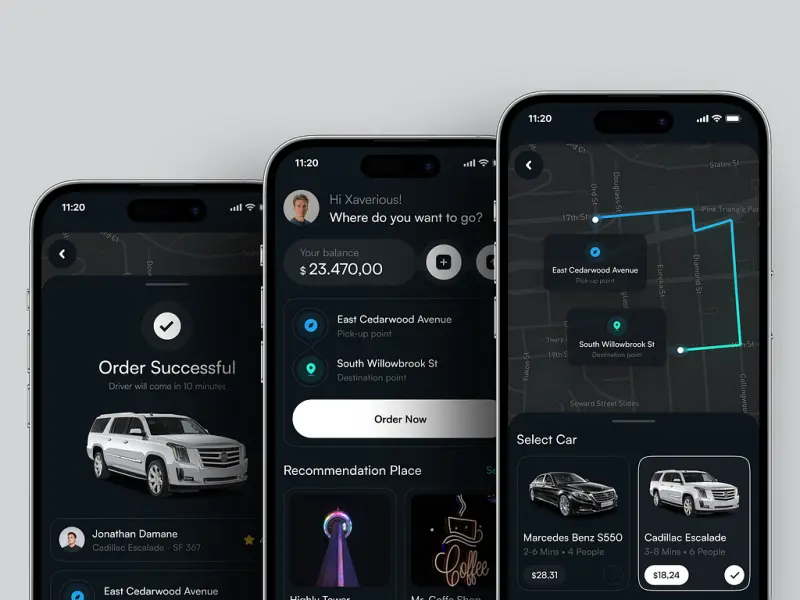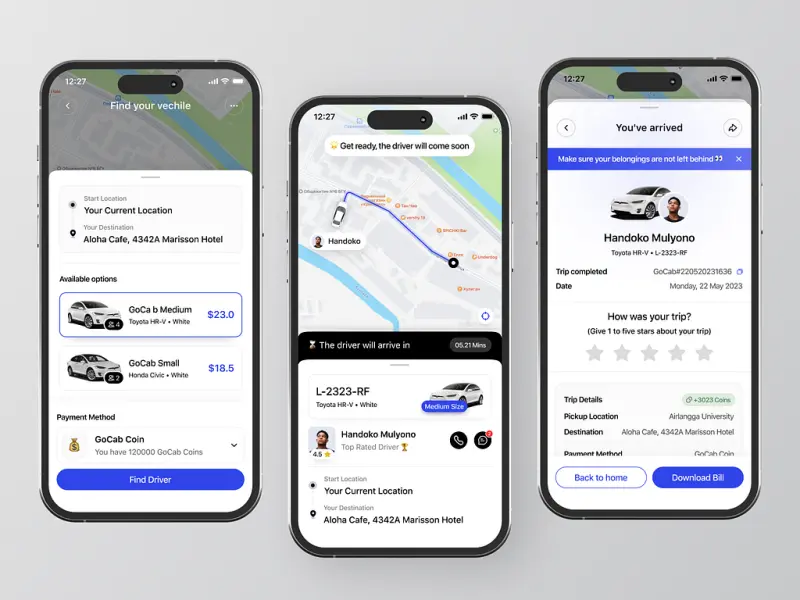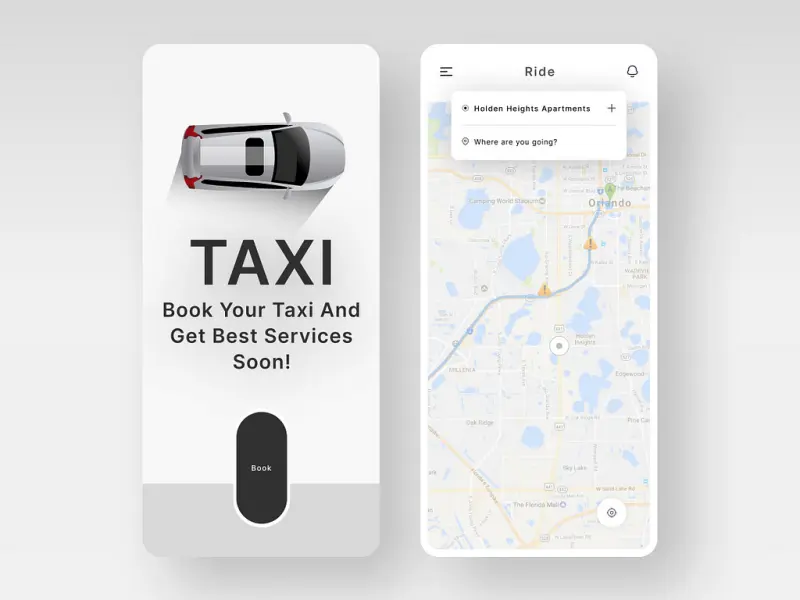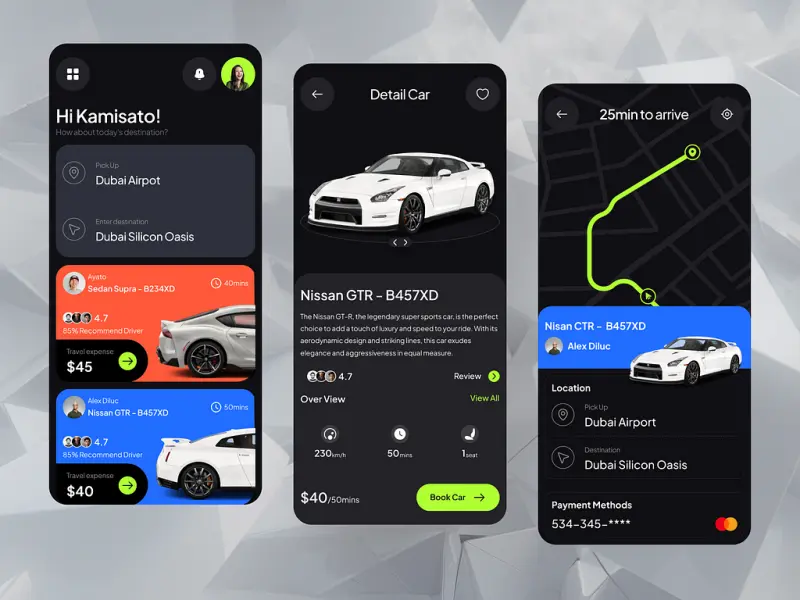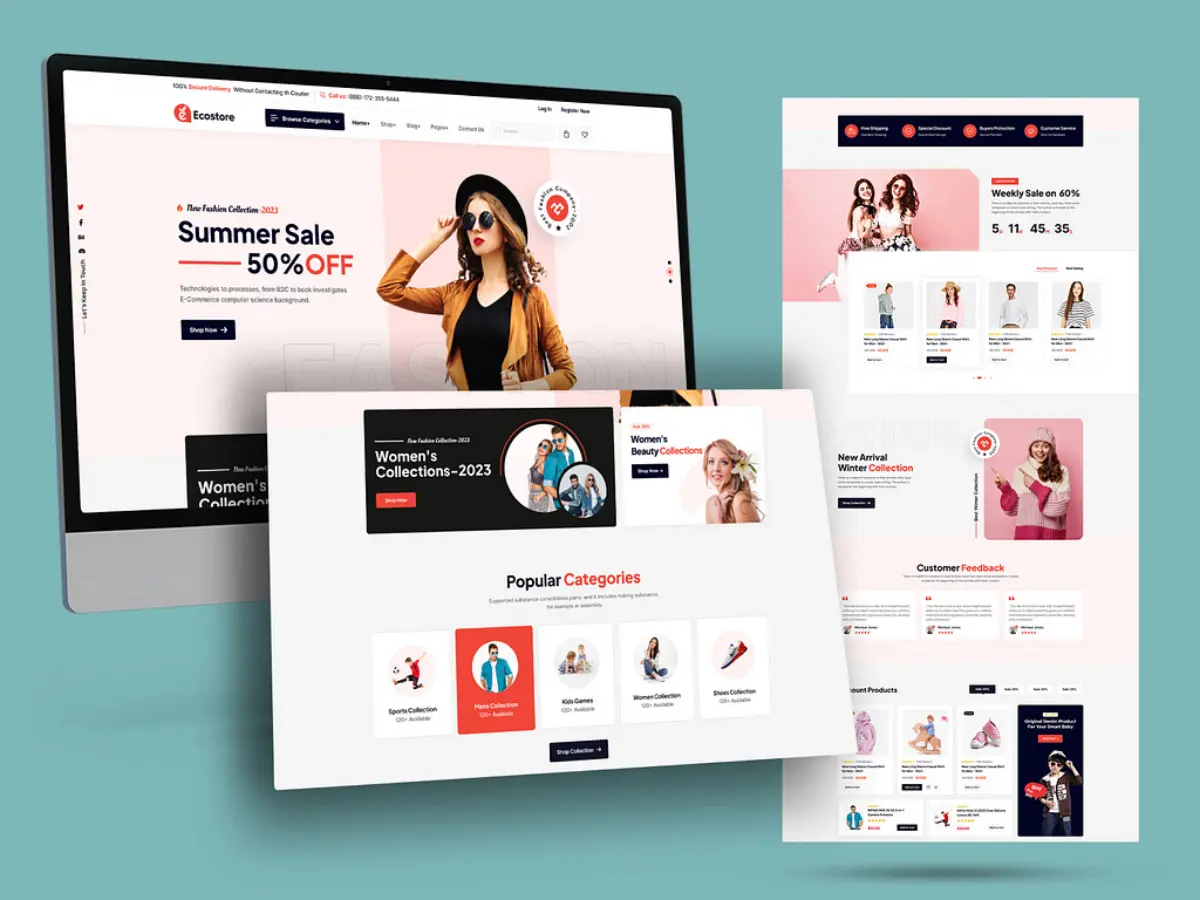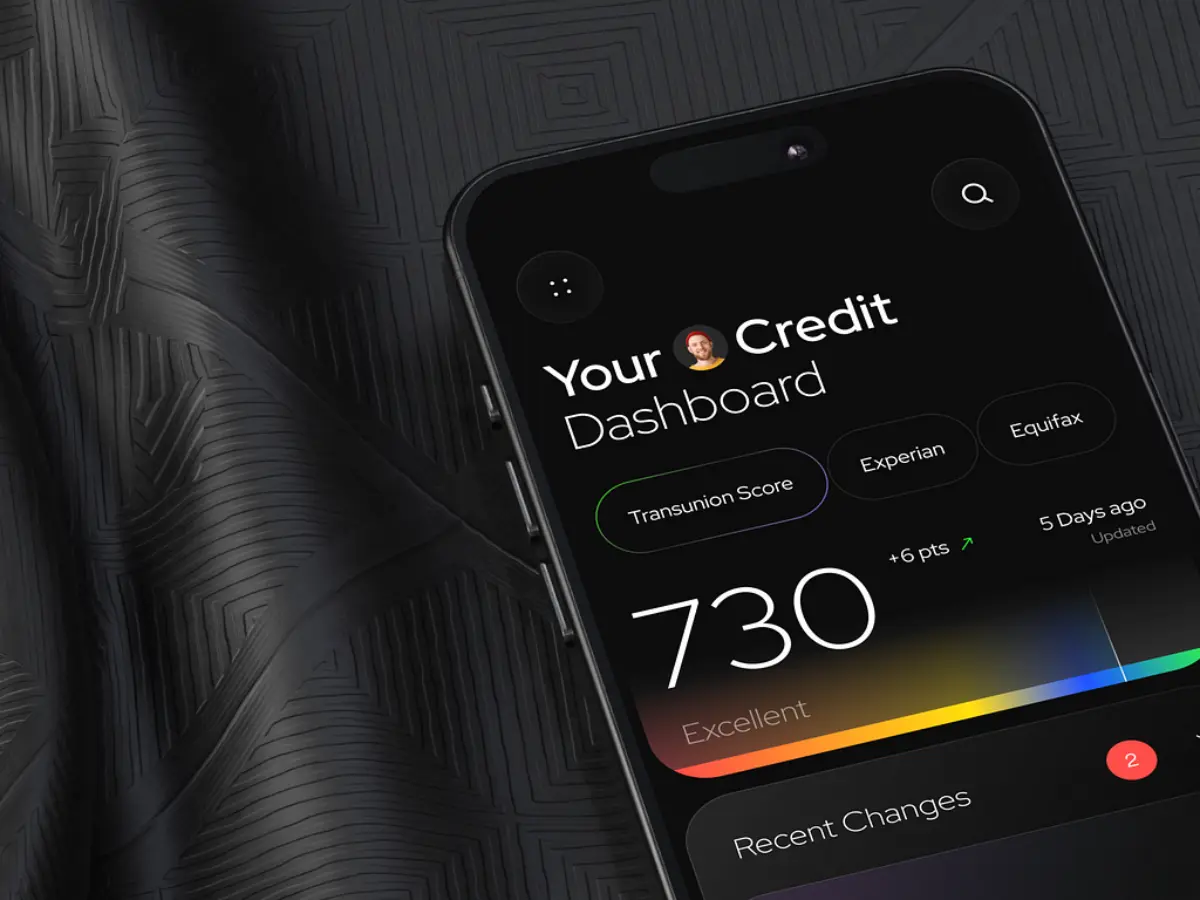The Full Detailed Taxi Booking App Development Cost Guide in 2025
- TECHVIFY Team
- 0 Comments
The increasing popularity of ride-hailing services has led to a surge in taxi app development ideas for both startups and established companies. Entrepreneurs are turning to mobile app development services to create custom apps that meet local needs for cab booking and carpooling.
Developing a successful app requires considering several key factors. Investing in this thriving industry offers numerous opportunities for business growth and can be a crucial step toward success. To effectively plan your budget, it’s important to understand the overall costs of developing a taxi booking app.
In this article, we’ll look at taxi booking app development cost and the factors that influence them.
I. Crucial Market Data on Taxi App Development
The revenue generated by the taxi app market is projected to hit $283 billion by 2028, reflecting a compound annual growth rate (CAGR) of 4.2% from 2023 to 2028.
Forecasts predict that the sector will experience an annual growth rate of 3.46% from 2023 through 2027, with an estimated market value of $379 billion by the conclusion of 2027.
By the year 2027, around 1.45 billion individuals globally are expected to utilize ride-hailing and taxi services.
User penetration, which stood at 17.4% in 2023, is anticipated to rise modestly, reaching 18.3% by 2027.
This market’s average revenue per user (ARPU) is forecasted to reach $247.
Taxi booking app market
It is projected that online sales will constitute 55% of the total revenue in the ride-hailing and taxi industry by 2027.
In 2019, the global valuation of the taxi industry was $69.1 billion, with expectations to grow to $120 billion by 2027, marking a CAGR of 12%.
Research indicates that a significant number of working professionals reside away from their hometowns for employment purposes, leading them to prefer booking taxis for their commutes. This trend has significantly boosted the demand for ride-hailing apps like Uber.
Learn More On:
II. 4 Types of Taxi Application Development
Types of Taxi Applications and Their Development Costs
Before delving into on-demand taxi app solutions, it’s crucial to understand the different types of taxi applications, as development costs can vary significantly:
Dedicated Taxi Booking App
When you engage an automobile software development company specializing in dedicated taxi booking apps, you receive a fully integrated solution that connects customers directly with the cars and drivers of a specific taxi service business. Users of dedicated applications can book rides through various methods offered by the business that owns the app. These applications prominently display the cab company’s branding and emblem, enhancing consumer recognition and trust in the service. Virtually any customization is possible with a dedicated cab booking software solution.
Taxi Aggregator App
A ridesharing platform, commonly known as a taxi aggregator app, functions as an intermediary between a collection of independent drivers with their vehicles and potential riders. Unlike dedicated applications, aggregator apps facilitate the booking and payment processes without owning or managing the vehicles directly. Drivers using aggregator apps are considered independent contractors rather than employees of the app company. Uber’s innovative marketing strategies have established it as one of the most renowned taxi aggregator apps. Other notable examples include Lyft, Ola, and Grab.
Simple Taxi Booking App
A simple taxi booking app operates without the need for a server. This application serves as a comprehensive platform where taxi drivers can promote their services, and users can directly contact and book taxis through the app.
On-Demand Taxi Booking App
This model involves a server and comprises two distinct apps: one for riders and another for taxi drivers. It allows users to request a taxi whenever needed or utilize built-in features. Although this model necessitates a higher investment, it proves to be more advantageous in the short term.
Have a Project Idea in Mind?
Get in touch with experts for a free consultation. We’ll help you decide on next steps, explain how the development process is organized, and provide you with a free project estimate.
III. Various Factors That Affect Taxi App Development Cost
When planning to develop a mobile app, costs are never predefined and depend on several factors. Let’s explore each one:
1. Platform Selection
One of the first crucial decisions is choosing the right platform for your taxi booking app cost. The two main platforms to consider are Android and iOS.
Android is favored for its extensive user base. However, the wide variety of devices and versions means more time is needed for testing and optimization, which can increase both development time and costs.
iOS offers a consistent user experience across devices, but development for this platform tends to be more expensive due to its stringent guidelines and quality standards.
You might wonder about developing for both platforms. Cross-platform app development is a cost-effective option, allowing you to write code once and deploy it across multiple platforms. Popular cross-platform frameworks include React Native and Flutter. This approach can save time and resources while reaching a broader audience.
Ride-hailing apps
2. App Features and Functionalities
The features and functionalities you choose to incorporate into your taxi app play a crucial role in the development process. The variety and complexity of features significantly influence the overall cost, with more advanced features requiring higher investment.
Basic features of taxi booking apps typically include:
- Ride booking
- GPS tracking
- Fare estimation
- Payment integration
To enhance the user experience, you may consider adding advanced features such as:
- Driver ratings and reviews
- Multiple vehicle options
- Promo codes and discounts
- Split payments
When planning your app, it’s essential to prioritize features that ensure a user-friendly experience while keeping development costs manageable. Balancing essential and advanced features can help create a functional, appealing app without unnecessary expenditure.
3. App Complexity
The complexity level of a taxi app is influenced by its architecture, features, third-party integrations, and overall design. The more complex the app, the more development time it requires, affecting the overall cost.
-
Basic Complexity Apps: These apps feature a simple design and offer fundamental functionalities. Typically, they cater to a single user type (rider or driver) with straightforward interactions.
-
Moderate Complexity Apps: These apps include more engaging and dynamic features such as real-time location tracking and payment gateways. They support multiple user types (passenger, driver) with a basic level of interaction.
-
High Complexity Apps: These apps boast advanced features, integrating complex algorithms and the latest technology to provide a seamless user experience.
When planning your app, it’s crucial to carefully assess the level of complexity required based on your goals, target audience, and market expectations. Striking the right balance between complexity and usability can help create an effective and user-friendly app.
4. Select Development Team
Building a successful taxi app requires a skilled development team. The team you choose will significantly affect the project timeline and quality. Here are your options:
In-house Development Team: This option allows you to have direct oversight and control over the development process. It involves hiring your organization’s developers, designers, and other technical experts. Although this method provides better integration and collaboration, it requires substantial resources for salaries, benefits, and workspace.
Freelancers: Freelance Developers are a cost-effective option for short-term projects. They work remotely and are hired on a project basis. While this can reduce expenses, freelancers might not be the best choice for complex, large-scale projects due to potential communication and coordination challenges.
Outsource App Development Company: Outsourcing involves hiring a specialized team from another location, often where labor costs are lower. This option can be cost-efficient and allows you to focus on core business activities. However, it requires effective communication and project management to ensure quality and timely delivery.
| Development Team | Characteristics |
|---|---|
| In-house Team | Direct control over the project, requiring significant resources for salaries and workspace. |
| Freelance Developers | Cost-effective for short-term projects, but may pose communication and coordination challenges for larger projects. |
| App Development Company | Cost-efficient with the benefit of focusing on core business activities, requiring effective communication and project management. |
Choose the team that aligns best with your project needs and budget. If you need specialized skills in certain technologies, consider hiring dedicated developers from a reputable source.
5. Geographical Location
The location of your development team is another crucial factor that influences costs. Different regions have varying labor costs and expertise levels.
United States and Western Europe: These regions typically have higher labor costs but offer high-quality work and advanced technical expertise.
Eastern Europe and Latin America: These areas provide a balance between cost and quality, making them popular choices for outsourcing.
South Asia and Southeast Asia: Known for their cost-effective services, these regions can significantly reduce development expenses, though you may need to manage time zone differences and communication challenges.
| Location | Characteristics |
|---|---|
| USA, Western Europe | Higher labor costs and advanced technical expertise. |
| Eastern Europe, Latin America | Moderate labor costs, good balance of cost and quality. |
| South Asia, Southeast Asia | Lower labor costs, known for cost-effective services, potential time zone, and communication challenges. |
Selecting a region that provides a good balance of cost and quality is essential. Effective communication and project management are key when working with teams in different time zones.
7. UI/UX Design
The user interface (UI) and user experience (UX) design are critical aspects of your taxi app. A well-designed app enhances user engagement and satisfaction.
- Simple UI/UX Design: This involves basic layouts and minimal graphics, making it quicker and less expensive to develop.
- Advanced UI/UX Design: Features interactive transitions and sophisticated animations, requiring more time and expertise.
Ensure that your design aligns with your brand identity and provides an intuitive experience for users.
Taxi hailing apps
8. Backend Development
The backend of your app handles all data processing, business logic, and server operations. Its complexity can significantly impact development time.
- Basic Backend: Supports essential functions like user authentication, data storage, and ride requests.
- Complex Backend: Includes advanced features and scalability options, requiring more development time and expertise.
Hiring experienced backend developers can help ensure that your app is robust, secure, and scalable.
9. Testing & QA
Testing and quality assurance (QA) are vital to ensure your app runs smoothly and is free of bugs.
- Manual Testing: Involves human testers who manually check for issues, providing detailed feedback but can be time-consuming.
- Automated Testing: Uses software tools to run tests quickly and efficiently, which can be more cost-effective in the long run.
- Comprehensive Testing: Combines both manual and automated testing to leverage the strengths of each method.
Investing in thorough testing helps deliver a high-quality app and reduces the risk of post-launch issues.
Learn More On:
IV. Full Breakdown of Taxi Booking App Development Cost in Vietnam
Outsourcing your taxi booking app development to a company in Vietnam can be a cost-effective choice while ensuring high-quality results. Below is a detailed cost breakdown reflecting typical costs in Vietnam.
| Development Phase | Description | Estimated Cost (USD) |
|---|---|---|
| Requirements Analysis | Gathering project requirements, defining scope, and planning | $800 – $2,000 |
| UI/UX Design | Creating wireframes, mockups, and user interface design | $1,500 – $4,000 |
| Frontend Development | Developing the user-facing part of the app (iOS, Android) | $4,000 – $12,000 |
| Backend Development | Setting up server, database, and API integrations | $3,000 – $10,000 |
| Admin Panel Development | Building a web-based admin panel for managing operations | $1,500 – $5,000 |
| Integration of Core Features | Implementing core features like geolocation, ride booking, fare calculation, and payment gateway integration | $5,000 – $12,000 |
| Advanced Features | Adding features like ride scheduling, driver tracking, and in-app chat | $3,000 – $8,000 |
| Quality Assurance and Testing | Manual and automated testing to ensure app functionality and performance | $1,500 – $5,000 |
| Deployment | App deployment to App Store and Google Play, including necessary adjustments | $800 – $1,500 |
| Maintenance and Support (per year) | Ongoing support, bug fixing, and updates | $2,000 – $6,000 |
Total Estimated Cost: $23,100 – $65,500
By choosing a Vietnamese company, you can benefit from competitive pricing while still achieving a high standard of development. This detailed breakdown should help you plan and budget effectively for your taxi booking app project.
V. Tips to Optimize the Cost for Taxi Booking App Development
The online taxi market is highly competitive today. Many wonder how to create a taxi app that stands out and succeeds. Here are some tips to address common concerns:
Develop an MVP
An MVP (minimum viable product) is a simplified version of the app with only essential functionalities. Launching an MVP allows users to install and use the app, which can improve your time to market. Additionally, user feedback from the MVP will provide valuable insights into what your app lacks and how it can be enhanced. This feedback is crucial for developing a final product that meets your audience’s needs.
Keep it Simple
The most successful apps are often straightforward and user-friendly rather than overloaded with features. Taxi apps like Uber exemplify how simplicity can lead to success. Focus on creating an intuitive and easy-to-navigate interface.
Taxi booking application
Have a Unique Vision
A unique value proposition will make your app stand out from the competition. Consider what unique features or services you can offer that people will love and can’t find elsewhere. This could be anything from affordable pricing and unique rewards to quick-ride availability. Identify gaps in the current market that your app can fill effectively.
Find Your Niche
Many don’t realize the diverse niches within the taxi industry. For instance, electric taxis cater to environmentally conscious users, while on-demand bike taxis appeal to those who find cabs too expensive. Women-friendly taxis with female drivers are another niche. Explore various niches and choose one that aligns with your target market’s preferences and needs.
Choose the Monetization Scheme Wisely
Several monetization schemes exist for taxi booking apps, including commission fees from passengers, service fees from taxi owners, and charges for third-party promotions or advertisements. Decide on your monetization strategy before the development process begins, ensuring it doesn’t negatively impact the user experience, as this could drive users away from your app.
Conclusion
The taxi app market is booming, offering immense opportunities for businesses ready to invest in innovative and user-centric solutions. Understanding the various types of taxi applications, the factors influencing taxi booking app development cost, and strategies to optimize these costs are essential steps in creating a successful app.
Ready to turn your taxi app idea into reality? Contact TECHVIFY today for top-notch taxi booking app development services. Our team of experienced developers is dedicated to delivering high-quality, customized solutions that drive success.
TECHVIFY – Global AI & Software Solution Company
From Startups to Industry Leaders: TECHVIFY prioritizes results, not just deliverables. Accelerate your time to market and see ROI early with high-performing teams, AI (including GenAI) Software Solutions, and ODC (Offshore Development Center) services.
- Email: [email protected]
- Phone: (+84)24.77762.666




